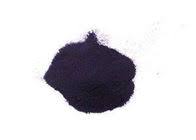Exploring the Role of Indigo Dye in Sustainable Jean Production and Its Impact on Fashion Industry
The Role of Indigo Dye in Jean Manufacturing
Indigo dye has been an integral part of the textile industry for centuries, and its application in jean manufacturing is particularly noteworthy. This deep blue dye, derived from the leaves of the indigo plant, is renowned for its rich color and its unique ability to fade with time, creating a distinctive aesthetic that is celebrated in denim fashion. In this article, we will explore the significance of indigo dye in jeans factories and its impact on sustainability and production practices.
Historical Context
The use of indigo dye can be traced back to ancient civilizations, including the Egyptians, Indians, and Chinese, who recognized its value in dyeing textiles. However, its prominence in the modern fashion industry surged with the popularity of denim jeans in the 19th century. Jeans, originally designed as durable workwear for laborers, underwent a transformation into a fashion staple in the 20th century, largely due to the appealing indigo color that characterized them.
The Dyeing Process
In jeans factories, the process of dyeing denim with indigo involves several steps. Typically, raw cotton is woven into the fabric and then dyed multiple times to achieve the desired shade of blue. The most common dyeing method is rope dyeing, where the fabric is twisted into ropes and submerged in indigo dye baths. This technique creates a rich depth of color while allowing the inner fibers to remain undyed, a characteristic that contributes to the fading effect over time.
However, achieving the perfect indigo hue is not without its challenges. The dyeing process must be carefully monitored to prevent over-dyeing or under-dyeing, which can lead to inconsistencies in color and style.
indigo dye for jeans factories

Sustainability Challenges
Despite its popularity, the use of indigo dye in jeans manufacturing poses significant environmental challenges. Traditional indigo dyeing methods can be water-intensive, and the chemicals used in the dyeing process can be harmful to both the environment and workers' health. In response to these issues, many jeans factories are adopting more sustainable practices. This includes the use of synthetic indigo, which requires less water and energy, and the implementation of closed-loop systems that recycle water and minimize waste.
Additionally, there is a growing trend towards organic cotton and natural indigo dyes. Organic farming practices eliminate harmful pesticides and promote biodiversity, while natural indigo contributes to a more eco-friendly production process. While the costs associated with these sustainable practices may be higher, consumers are increasingly willing to pay a premium for environmentally responsible products.
Fashion and Culture
Indigo-dyed jeans have not only revolutionized fashion but have also become a cultural phenomenon. They symbolize rebellion, individuality, and a connection to Americana. The signature fading of indigo denim has given rise to subcultures and communities that celebrate the art of distressing jeans, turning them into unique pieces that tell a story. This aspect of indigo-dyed denim appeals to consumers who value authenticity and artisan craftsmanship.
Conclusion
Indigo dye’s significance in jeans factories extends beyond mere aesthetics. It is a blend of history, culture, and the pressing need for sustainable practices. As the fashion industry continues to evolve, the challenge lies in balancing tradition with innovation. By embracing eco-friendly practices and harnessing the allure of indigo dye, jeans factories can contribute to a more sustainable future while still capturing the hearts of consumers around the globe. The journey of indigo—from its natural origins to the denim products we wear today—reflects a deep relationship between human creativity and the natural world, making it a vital player in the textile industry.
-
Sulphur Black Dyes in Daily Use
NewsMay.07,2025
-
Indigo Dyeing for Daily Life
NewsMay.07,2025
-
Indigo Dye Production and Its Growing Demand
NewsMay.07,2025
-
Color That Lasts
NewsMay.07,2025
-
Bromo Indigo for Modern Use
NewsMay.07,2025
-
Blue From Nature
NewsMay.07,2025
-
The Timeless Color in Fashion and Textiles
NewsApr.10,2025

Sulphur Black
1.Name: sulphur black; Sulfur Black; Sulphur Black 1;
2.Structure formula:
3.Molecule formula: C6H4N2O5
4.CAS No.: 1326-82-5
5.HS code: 32041911
6.Product specification:Appearance:black phosphorus flakes; black liquid

Bromo Indigo; Vat Bromo-Indigo; C.I.Vat Blue 5
1.Name: Bromo indigo; Vat bromo-indigo; C.I.Vat blue 5;
2.Structure formula:
3.Molecule formula: C16H6Br4N2O2
4.CAS No.: 2475-31-2
5.HS code: 3204151000 6.Major usage and instruction: Be mainly used to dye cotton fabrics.

Indigo Blue Vat Blue
1.Name: indigo blue,vat blue 1,
2.Structure formula:
3.Molecule formula: C16H10N2O2
4.. CAS No.: 482-89-3
5.Molecule weight: 262.62
6.HS code: 3204151000
7.Major usage and instruction: Be mainly used to dye cotton fabrics.

